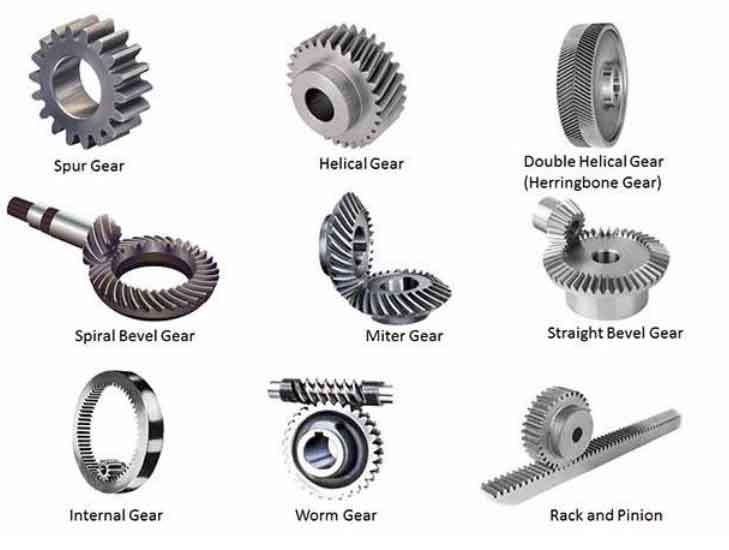Spur gears and herringbone gears are two types of gears used in mechanical systems. While both gears serve the purpose of transmitting power and motion between rotating shafts, they have different designs, characteristics, and applications. Let’s compare spur gears and herringbone gears in terms of their design, noise reduction, efficiency, torque transmission, backlash, and applications.

- Design:
- Spur Gears: Spur gears are cylindrical gears with straight teeth that extend radially from the gear’s center. The teeth on spur gears are parallel to the axis of rotation. Spur gears are designed for parallel shafts and provide motion in the same plane.
- Herringbone Gears: Herringbone gears, also known as double helical gears, have teeth that are cut in a “V” shape. The teeth on herringbone gears are helical and form a herringbone pattern. They are designed to cancel out axial thrust forces generated by helical gears.
- Noise Reduction:
- Spur Gears: Spur gears can generate noise due to the abrupt engagement and disengagement of the gear teeth. The noise level increases at higher speeds and loads.
- Herringbone Gears: Herringbone gears are specifically designed to reduce noise and vibrations. The “V” shape of the teeth helps to cancel out axial forces, resulting in smoother and quieter operation compared to spur gears.
- Efficiency:
- Spur Gears: Spur gears are known for their high efficiency, typically ranging from 95% to 98%. The straight teeth of spur gears provide smooth and efficient power transmission.
- Herringbone Gears: Herringbone gears generally have slightly lower efficiency compared to spur gears due to the complex tooth profile and additional manufacturing requirements. The efficiency of herringbone gears typically ranges from 93% to 97%.
- Torque Transmission:
- Spur Gears: Spur gears are suitable for transmitting high torque loads between parallel shafts. They can handle both parallel and axial loads effectively.
- Herringbone Gears: Herringbone gears excel in torque transmission and are commonly used in high-torque applications. The double helical design of the teeth helps to balance axial thrust forces, allowing for greater torque capacity.
- Backlash:
- Spur Gears: Spur gears can have backlash, which is the slight clearance between the mating gear teeth. However, backlash can be minimized by proper gear design and manufacturing techniques.
- Herringbone Gears: Herringbone gears have a self-centering nature due to their double helical design. This helps to reduce or eliminate backlash, resulting in smoother and more precise operation.
- Applications:
- Spur Gears: Spur gears find wide application in various mechanical systems, including automotive transmissions, machinery, conveyor systems, and many other power transmission applications where high efficiency and precise speed ratios are required.
- Herringbone Gears: Herringbone gears are commonly used in applications where noise reduction, high torque transmission, and elimination of axial thrust forces are crucial. They are often found in heavy machinery, gearboxes, and industrial applications where smooth and quiet operation is desired.
In summary, spur gears are versatile, efficient, and widely used in various applications. They are suitable for transmitting power between parallel shafts. Herringbone gears, on the other hand, provide advantages in terms of noise reduction, high torque transmission, and elimination of axial thrust forces. They are preferred in applications where quiet operation and handling of heavy loads are essential. The choice between spur gears and herringbone gears depends on the specific requirements of the application, including factors such as torque, noise considerations, and operational conditions.
